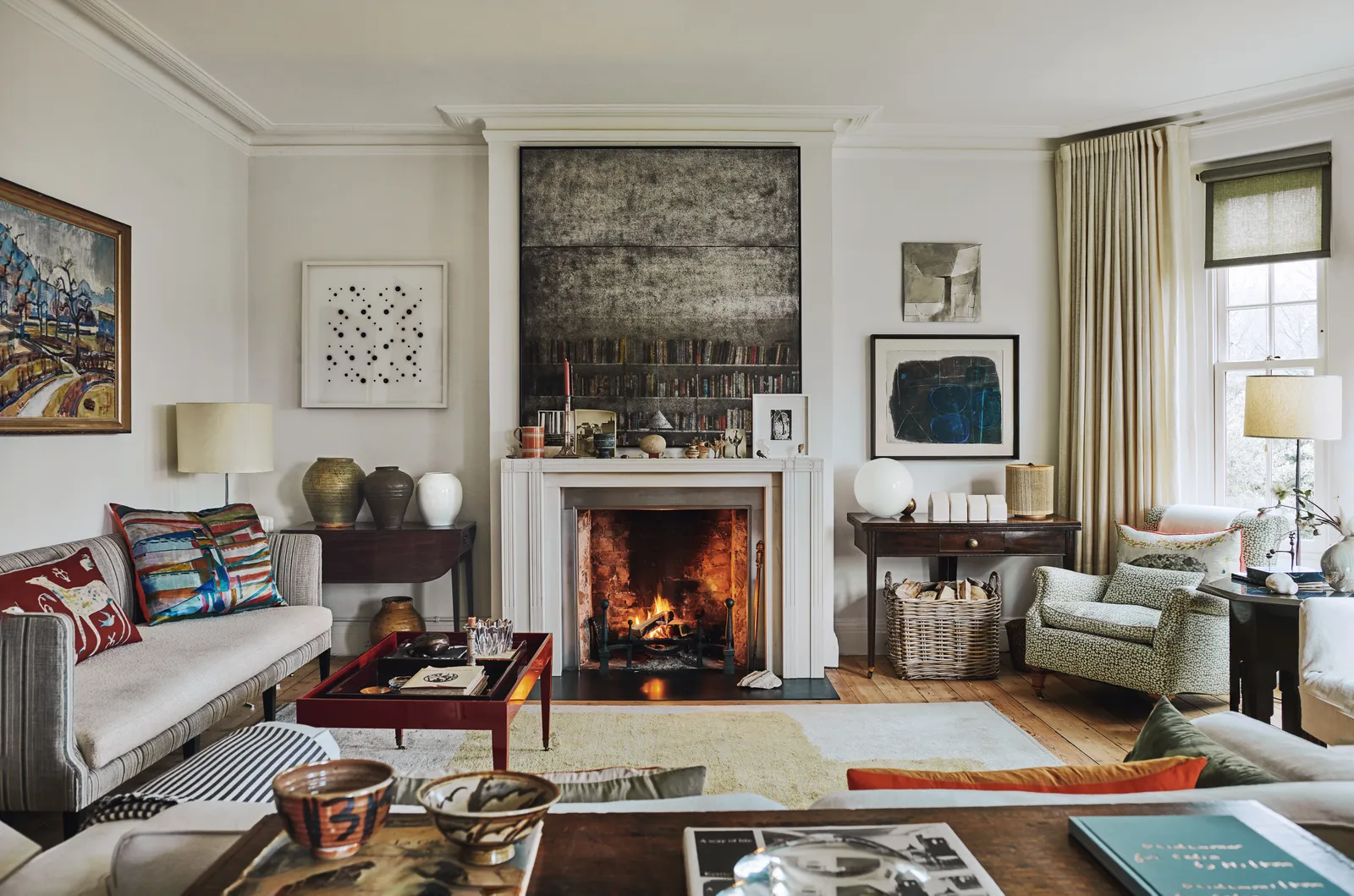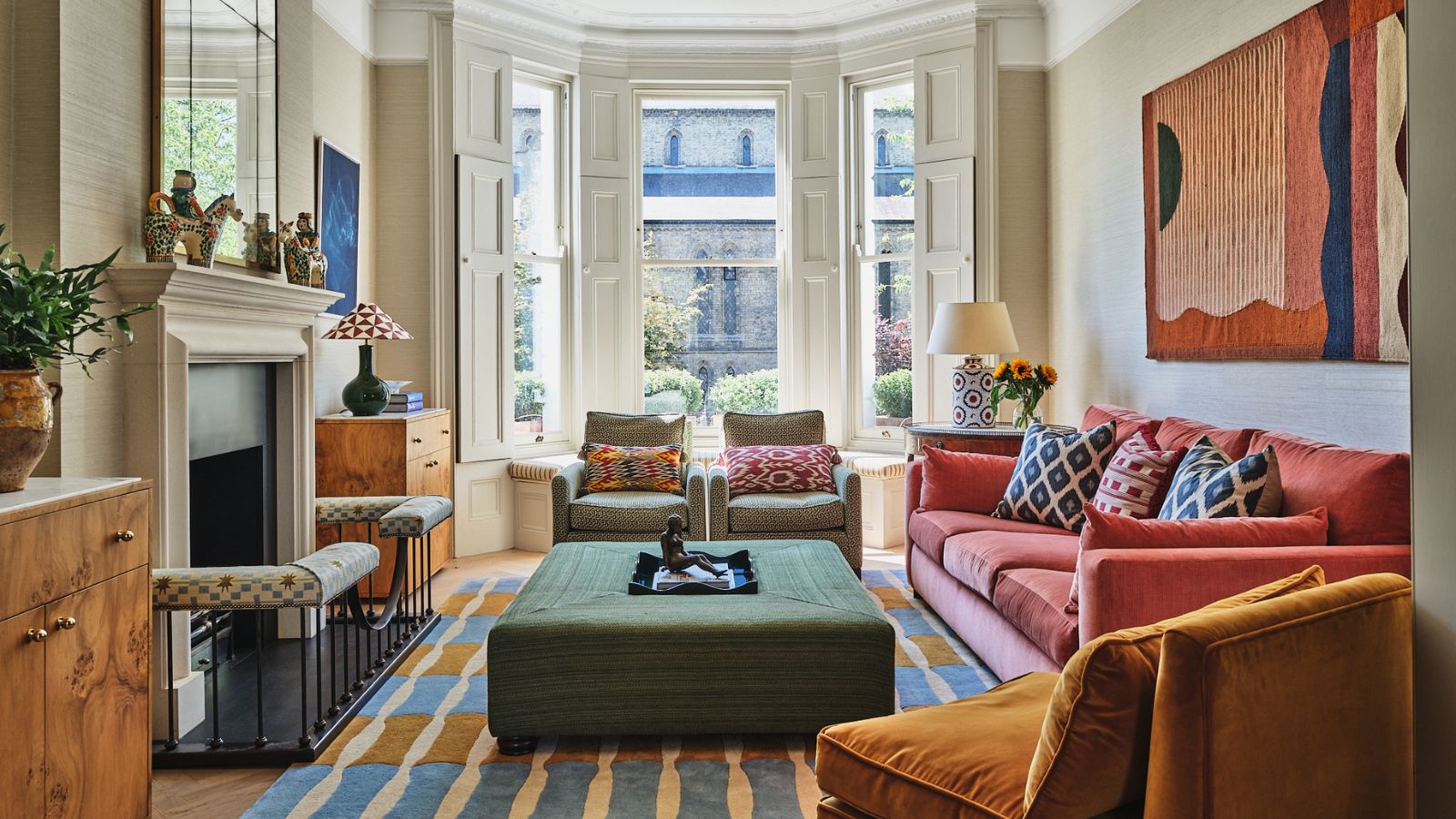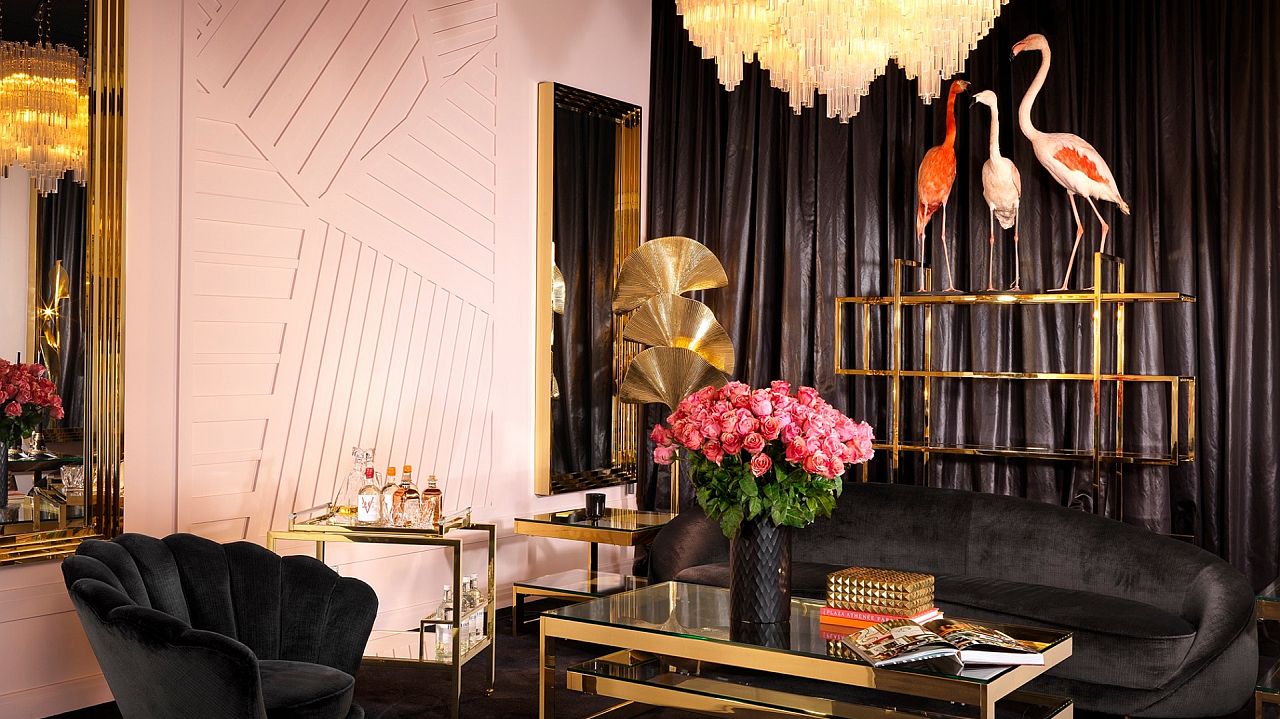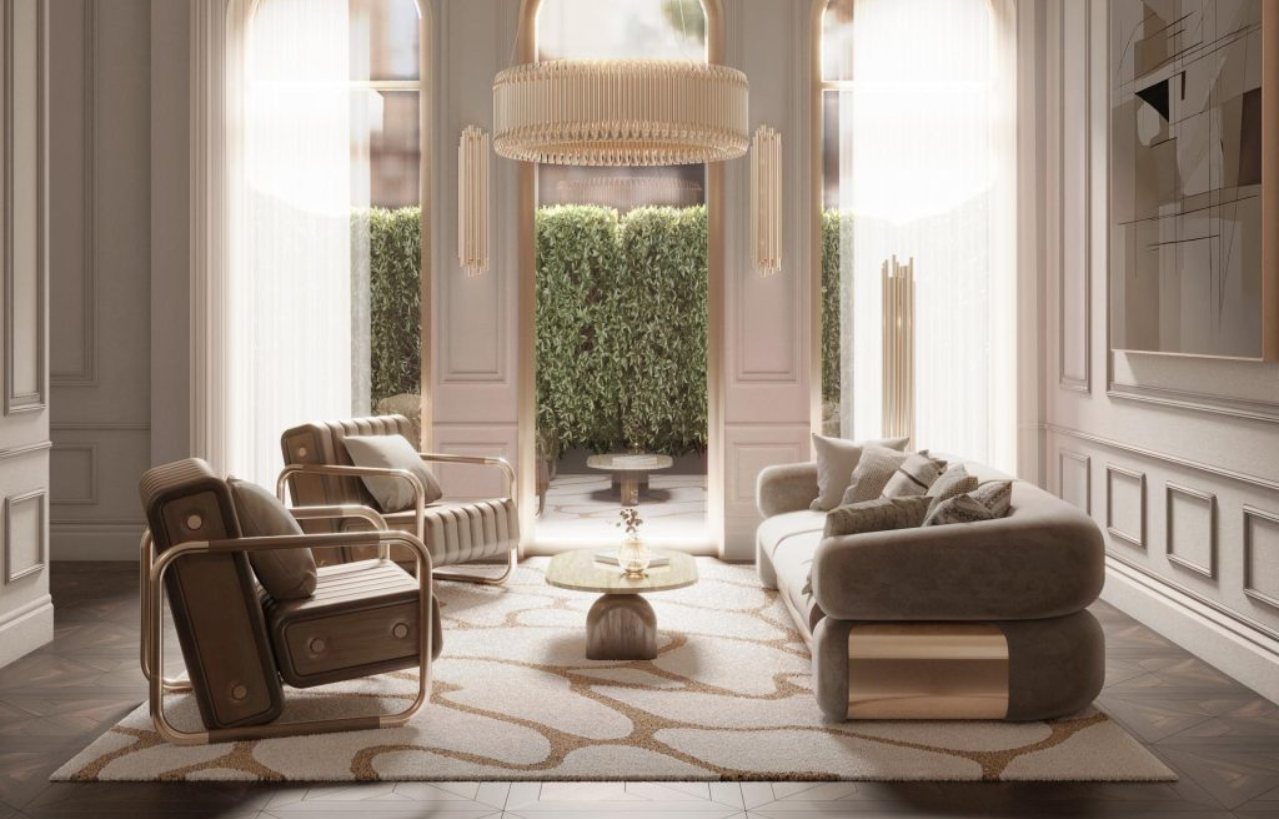Budget Friendly Room Makeover Ideas
Transform any room without spending a fortune. Real ideas for painting, rearranging, and updating your space using what you already have plus a few affordable additions.
Let's be honest—most of us don't have unlimited budgets for home makeovers. But here's the thing I've learned after transforming my own flat in Budapest on a shoestring budget: you don't need heaps of money to create a space that feels completely different and totally yours. What you need is a bit of creativity, some elbow grease, and the willingness to see potential in what you already own.
I remember standing in my living room two years ago, feeling absolutely frustrated with how dated everything looked. The walls were this depressing beige, the furniture arrangement made the space feel cramped, and honestly, I was embarrassed to have friends over. The problem? My bank account was pretty much empty after moving costs. That's when I started researching budget-friendly makeover ideas, and I discovered that some of the most dramatic transformations don't require spending thousands of forints.
What makes a room makeover truly budget-friendly isn't just about spending less—it's about spending smart. It's about understanding which changes create the biggest visual impact, knowing where to splurge those few extra forints, and being clever about repurposing what you've got. Whether you're renting a small flat in Debrecen or own a house in the Hungarian countryside, these strategies work because they focus on fundamental design principles rather than expensive purchases.
Throughout this guide, I'll share practical, tested ideas that have worked for me and countless others. We're talking about real transformations you can achieve over a weekend, not theoretical design concepts that require professional help. From strategic paint choices to furniture rearrangement tricks, you'll discover how to breathe new life into any room without the financial stress.
The Power of Paint: Your Cheapest Design Tool
Paint is genuinely the most cost-effective way to transform a space. A single tin of quality paint from OBI or Praktiker costs between 3,000-8,000 HUF depending on the brand, and that's often enough to completely change how a room feels. I've seen rooms go from drab to dramatic with nothing more than a weekend painting session and maybe 15,000 forints worth of supplies.
Here's what most people get wrong about paint: they play it too safe. Beige walls are everywhere in Hungarian homes, and while they're inoffensive, they're also incredibly boring. Consider going bold with an accent wall—choose one wall in your room and paint it a deep, saturated color. Navy blue, forest green, or even a rich terracotta can add serious depth without overwhelming the space. The key is keeping the other three walls neutral so the room doesn't feel closed in.
If you're renting and worried about your deposit, here's a trick: many landlords are actually fine with painted walls as long as you do a decent job and choose colors that aren't absolutely wild. Always check your rental agreement first, but I've found that most property owners in Hungary prefer a well-maintained painted wall over a scuffed, marked beige one. Alternatively, focus on painting furniture instead—an old dresser or bookshelf can look completely new with a coat of paint and updated hardware.
Paint Techniques That Add Character Without Cost
Beyond solid colors, there are painting techniques that create visual interest without requiring artistic talent. Color blocking is massive right now—paint geometric shapes or horizontal stripes using painter's tape for clean lines. I did this in my bedroom using three shades of grey, and it cost me maybe 5,000 forints extra but looks like I hired a professional.
Another technique worth trying is the half-wall approach. Paint the bottom half of your walls a darker color and keep the top half light. This visually lowers the ceiling in a good way, making spaces feel cozier, and it's particularly effective in older Hungarian flats with those super high ceilings. Add a thin shelf or picture rail where the colors meet for a really polished look.
Furniture Rearrangement: The Zero-Cost Transformation
This is probably my favorite budget trick because it costs absolutely nothing except some physical effort. Most people arrange furniture the way it was when they moved in and never reconsider it. But furniture placement dramatically affects how a room functions and feels. I once made my living room feel 30% larger just by moving the sofa away from the wall and creating a proper conversation area.
Start by measuring your room and furniture pieces. Use graph paper or a free online tool like Roomstyler to experiment with different layouts before you start pushing heavy furniture around. The goal is to create clear pathways, define functional zones, and make sure the room's focal point—whether that's a window, fireplace, or TV—is properly emphasized.
Here's a specific tip for small Hungarian flats: float your furniture. Instead of pushing everything against the walls (which actually makes rooms feel smaller), pull pieces slightly away from the walls. Create a seating arrangement that faces inward, even if it's just two chairs and a small side table. This creates intimacy and makes the space feel intentionally designed rather than just furnished.
Creating Zones in Open Spaces
If you've got an open-plan living area—which is becoming more common in newer Hungarian developments—use furniture to define different zones. A bookshelf can separate a living area from a dining space. A sofa positioned perpendicular to the wall creates a natural division between spaces. Even a large rug can visually define a zone without any physical barriers.
I created a home office area in my living room using nothing but a small desk positioned behind the sofa and a tall plant that acts as a visual divider. Total cost? Zero forints, because I used furniture I already owned. The psychological difference of having a "separate" work area versus working at the dining table has been genuinely life-changing.
Lighting Upgrades That Won't Break the Bank
Lighting is criminally underrated when it comes to budget makeovers. Most rental flats come with these awful, basic ceiling fixtures that cast harsh overhead light and make everything look flat and uninviting. The good news? You can dramatically improve your lighting for under 20,000 forints.
Start with bulbs. Switch out any cool white bulbs for warm white ones (look for 2700K-3000K on the packaging). The difference is immediate and costs maybe 500-800 forints per bulb. Warm lighting makes spaces feel cozier and more expensive. Then, add layers of lighting. Instead of relying solely on overhead lights, incorporate table lamps, floor lamps, or even string lights to create ambient lighting at different levels.
IKEA has decent affordable lamp options, but honestly, some of the best lighting finds come from second-hand shops or online marketplaces like Jófogás. I've found beautiful vintage lamps for 2,000-5,000 forints that just needed new wiring or a good cleaning. Facebook Marketplace is also brilliant for this—people constantly sell perfectly good lamps when they're moving or redecorating.
DIY Lighting Projects
If you're slightly handy, consider making your own light fixtures. You can buy pendant light kits from hardware stores for around 3,000-4,000 forints and then create your own shade using materials like woven baskets, paper lanterns, or even interesting wire constructions. I made a pendant light using a vintage colander from a flea market, and it's become a genuine conversation piece.
Another simple upgrade: install dimmer switches. They cost about 2,000-4,000 forints each and take maybe thirty minutes to install if you're comfortable with basic electrical work (or hire someone for another 5,000-8,000 forints). Being able to adjust lighting levels changes the entire mood of a room and makes it feel much more sophisticated.
Wall Decor on a Shoestring Budget
Blank walls make spaces feel unfinished and impersonal, but quality art can be ridiculously expensive. The solution? Get creative with what constitutes "wall art." Some of the most interesting gallery walls I've seen use a mix of actual art, personal photographs, mirrors, and three-dimensional objects.
Print your own art. Websites like Unsplash and Pexels offer free high-resolution images that you can download and print at photography shops for a fraction of what you'd pay for ready-made prints. A standard A3 print might cost 1,500-3,000 forints depending on paper quality. Get a cheap frame from IKEA or Pepco (they're often just 1,000-2,000 forints), and suddenly you've got custom artwork for under 5,000 forints per piece.
Create a gallery wall using mismatched frames—this actually looks more interesting than matching sets. Hit up second-hand shops and flea markets like Ecseri in Budapest for vintage frames. Paint them all the same color (black, white, or even a bold color like gold) to unify the look. Arrange them on the floor first to figure out your layout, then hang them starting from the center and working outward.
Alternative Wall Decor Ideas
Think beyond traditional framed art. Woven wall hangings are trendy right now and surprisingly easy to make if you've got a few hours and maybe 3,000-5,000 forints worth of yarn and a wooden dowel. Floating shelves (which you can get from IKEA for around 2,000-4,000 forints each) create visual interest while adding functional storage. Style them with books, small plants, and decorative objects.
Mirrors are brilliant for making rooms feel larger and brighter, especially in those darker Hungarian flats with limited natural light. Large mirrors can be expensive, but I've found gorgeous vintage ones at flea markets for 5,000-10,000 forints. Even small mirror clusters arranged artistically create impact. Position mirrors opposite windows to maximize natural light reflection.
Bringing Life In: Plants as Decoration
Plants are probably the best investment you can make for any room makeover. They add color, texture, life, and even improve air quality. The best part? Many plants are incredibly cheap and easy to propagate, meaning one plant can become five or ten plants within a year if you're patient.
Start with easy-care plants if you're not confident in your green thumb. Pothos, snake plants, and spider plants are nearly indestructible and cost between 1,000-3,000 forints at garden centers or even grocery stores like Aldi and Lidl when they have their plant specials. I've built an entire indoor jungle spending maybe 15,000 forints total over two years, mostly by propagating cuttings from my original plants.
Don't overlook the power of plant styling. An affordable plant in an interesting pot becomes a design feature. You don't need expensive ceramic pots—I've used vintage tins, painted terracotta pots (which cost maybe 500-800 forints each), woven baskets with plastic liners, and even interesting glass containers for water-propagated plants. The container matters as much as the plant itself.
Creating a Plant Display
Group plants at different heights using plant stands, stacked books, or wall-mounted shelves. This creates a more intentional, curated look than having plants scattered randomly around a room. I built a simple plant shelf using wooden planks and metal brackets from a hardware store for under 5,000 forints, and it's become a major focal point in my living room.
Hanging plants are particularly effective in small spaces because they draw the eye upward and don't take up floor space. Macramé plant hangers are having a major moment and are actually pretty simple to make yourself—there are loads of YouTube tutorials. Alternatively, basic plant hangers cost around 1,000-2,000 forints at garden centers.
Textile Transformations: Cushions, Throws, and Curtains
Textiles are an incredibly effective way to add color, pattern, and texture to a room without permanent changes. The beauty of cushion covers, throws, and curtains is that they're easy to change seasonally or when you fancy a different look, and they don't require any major commitment.
You don't need to buy everything new. If you can sew even basic straight lines, making cushion covers is genuinely simple and lets you use any fabric you love. Fabric stores in Hungary often have remnant bins where you can find quality fabric for a fraction of the regular price—I've gotten gorgeous fabrics for 1,000-2,000 forints per meter. Even if you can't sew, many alterations shops will make simple cushion covers quite cheaply.
For ready-made options, check out places like Pepco, Kik, and H&M Home for affordable cushions and throws. They regularly have seasonal collections with on-trend colors and patterns for under 3,000 forints per piece. Mix different textures—velvet, linen, cotton, chunky knits—to create visual interest. The key is choosing a cohesive color palette so everything works together even if patterns and textures vary.
Window Treatment Updates
Curtains might seem like a minor detail, but they have massive impact on how finished a room looks. If you've got those standard-issue rental curtains (you know the ones), replacing them can completely transform your space. The trick is hanging curtains properly—mount the rod as close to the ceiling as possible and let the curtains just barely kiss the floor or even puddle slightly. This makes ceilings look higher and windows look larger.
For budget-friendly curtain options, IKEA's basic curtains start around 5,000-8,000 forints per panel. You can customize cheap curtains by adding trim, fabric dye, or even painting patterns using fabric paint and stencils. I once transformed plain white IKEA curtains using indigo dye in a shibori pattern, and they looked like they came from a boutique design shop. Total cost including dye: under 10,000 forints for two windows.
Upcycling and Repurposing: Giving Old Things New Life
Some of my favorite room elements are pieces I've upcycled or repurposed. There's something deeply satisfying about taking something old or unwanted and transforming it into something beautiful and functional. Plus, it's genuinely one of the most budget-friendly approaches because you're often working with free or very cheap materials.
Furniture painting and updating is probably the most common upcycling project, and for good reason—it works. That dated wooden dresser? Sand it lightly, paint it a bold color, swap the handles for modern ones (hardware stores sell these for 500-1,000 forints each), and suddenly it's a statement piece. I transformed an old IKEA bookshelf using contact paper that looked like marble for about 2,000 forints, and people genuinely thought I'd bought an expensive new piece.
Look for free furniture on Facebook Marketplace or local community groups. People constantly give away perfectly good furniture when moving, and while it might need some work, that's where the budget savings come in. I got a solid wood coffee table for free that just needed sanding and oiling—maybe 3,000 forints worth of supplies and a few hours of work turned it into a piece that would've cost 50,000+ forints new.
Creative Repurposing Ideas
Think beyond obvious furniture pieces. Vintage suitcases stacked become a quirky side table. Old wooden crates (often free from markets) can be mounted as shelves or used as storage. Mason jars or interesting glass containers become vases or storage for bathroom items. I've used vintage plates as wall art, turned an old ladder into a blanket display, and transformed wine crates into a shoe storage solution.
The key to successful upcycling is seeing potential rather than just seeing old stuff. When you're at flea markets or browsing second-hand shops, ask yourself: what could this become with some paint, new hardware, or creative thinking? Some of my best pieces came from seeing past ugly finishes to good bones underneath.
Small Details That Make Big Differences
Sometimes it's the tiny details that take a room from "fine" to "wow." These are often the most overlooked aspects of room makeovers, but they're incredibly budget-friendly and have disproportionate impact on how polished a space feels.
Update hardware throughout the room. Switch out basic doorknobs, drawer pulls, and cabinet handles for more interesting options. You can find affordable options at hardware stores or online, typically for 500-2,000 forints per piece. Matching metals throughout a room (all brass, all matte black, all brushed nickel) creates a more cohesive, intentional look.
Organize and hide clutter. Visible mess makes even beautifully decorated rooms look chaotic. Invest in some affordable storage solutions—woven baskets from IKEA or Pepco (1,000-3,000 forints each), decorative boxes, or even fabric bins. Style open shelving carefully, keeping it about 70% full and grouping items by color or size. Remove or hide anything that doesn't serve the room's aesthetic.
The Power of Styling
Learn basic styling principles. Group objects in odd numbers (three or five items look more natural than even numbers). Vary heights when arranging items on surfaces. Use the rule of triangles—if you imagine drawing lines between objects in a vignette, they should form triangles rather than straight lines. These are free techniques that professional designers use, and they genuinely work.
Don't underestimate the impact of cleanliness and maintenance. A deep clean, touching up scuffed walls, tightening loose fixtures, and fixing minor issues costs almost nothing but makes everything look more cared for and valuable. Sometimes a room doesn't need a makeover—it just needs proper attention and maintenance.
Bringing It All Together
The beautiful thing about budget-friendly room makeovers is that they're not about compromising on style—they're about being strategic and creative with limited resources. Every single idea I've shared comes from real experience, either my own transformations or those of friends who've successfully updated their spaces without financial stress.
Start with the changes that offer the biggest visual impact for the least money: paint, furniture rearrangement, and lighting. These three elements alone can completely transform how a room looks and feels. Then layer in the smaller changes—textiles, plants, wall decor, updated details—that add personality and polish. The key is taking it step by step rather than trying to do everything at once.
Remember that room makeovers don't have to happen overnight. I've taken months to gradually transform spaces, adding elements as I found good deals or had time for DIY projects. This approach is actually better because it lets you live with changes, figure out what works, and avoid impulse purchases that don't serve the space. Your room should evolve with you, not become a rushed project you later regret.
The most important thing? Trust your instincts and create spaces that genuinely make you happy. Design rules are helpful guidelines, but your home should reflect your personality and support how you actually live. Budget constraints can actually fuel creativity rather than limit it—some of my favorite design solutions came from working within tight financial boundaries and having to think differently about problems.
Ready to Start Your Room Makeover?
Join our DIY community for more budget-friendly home transformation ideas, step-by-step tutorials, and exclusive tips delivered straight to your inbox.




